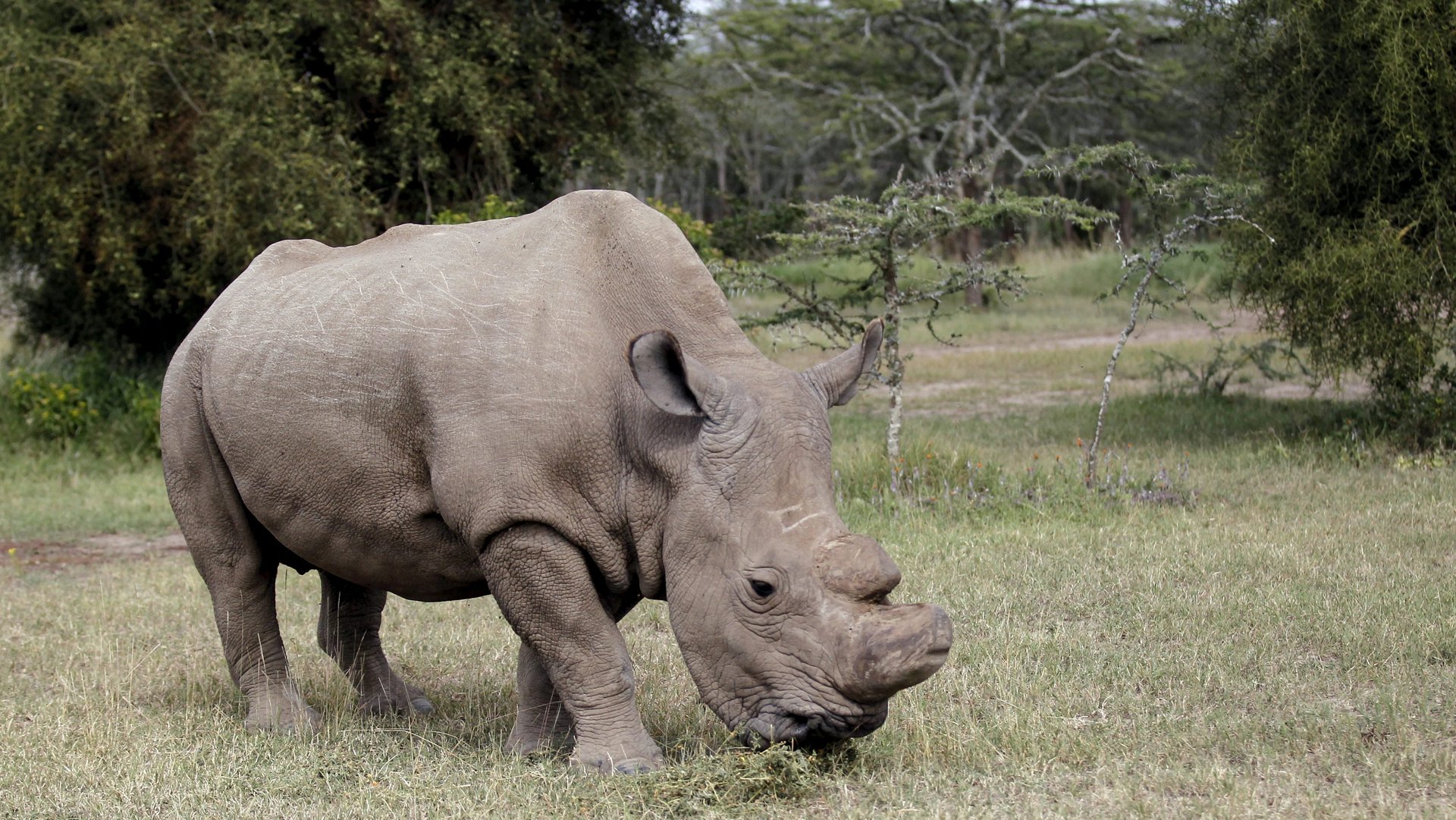The last male northern white rhino on Earth has joined Tinder
The only remaining male northern white rhino in the world, 43-year-old Sudan, has joined Tinder.


The only remaining male northern white rhino in the world, 43-year-old Sudan, has joined Tinder.
The Ol Pejeta Conservancy in Kenya where Sudan lives has partnered with the social media app to raise money for a northern white rhino breeding campaign. Tinder users in 190 countries and in 40 languages will now be able to see Sudan’s profile, describing him as the “most eligible bachelor in the world.” If users swipe right (typically a sign of interest on the app) they will be directed to a campaign page to raise $9 million to develop reproductive technologies for the species, including in-vitro fertilization.
Sudan lives in Ol Pejeta with two female northern white rhinos, Najin and Fatu, both of whom have been unable to breed naturally due to several issues. Age is one—female rhinos start breeding from age six or seven; Najin is 25 and Fatu is 15. Sudan’s sperm levels are also critically low. If the IVF procedures are successful, they would allow researchers to “reintroduce a viable population of northern white rhino back into the wild which is where their true value will be realized,” Richard Vigne, Ol Pejeta’s chief executive officer, said.
Najin, Fatu, and Sudan live under 24-hour armed guard in the conservancy, also one of the largest black rhino sanctuaries in east Africa and located in Laikipia, in Kenya’s central highlands. They lived previously in a zoo in the Czech Republic, but were transferred to Kenya in 2009 in the hopes that the climate, natural habitat, and dietary conditions would provide more favorable breeding conditions. But those hopes haven’t been realized.
Widespread poaching and civil wars have decimated Africa’s rhino population, with the northern white rhino suffering the greatest losses. By the 1960s, there were only 2,300 left—that figure dwindled to just 15 in 1984. Governments have started taking drastic measures to stop this sharp decline. These include hiring snipers in Kenya to protect the vulnerable rhino population, and relocating rhinos in South Africa to Australia to create an “insurance population” that would save them from extinction.